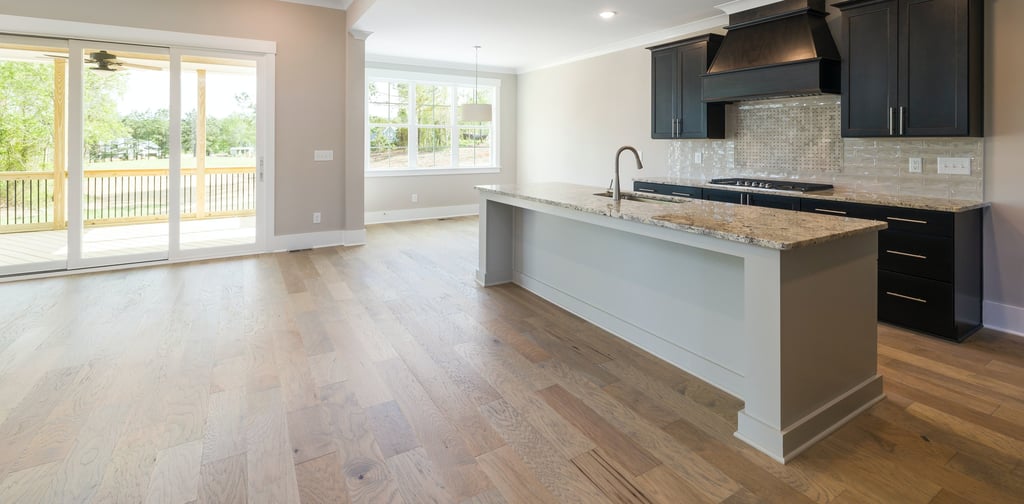
What is SPC Flooring
OWNMAN OVERSEAS
4/29/20233 min read


SPC FLOORING :
Multiple layers of fiber-reinforced polypropylene (FPRPP) are used to create SPC flooring. After that, adhesives are used to join the layers together, producing a strong, long-lasting material with good thermal, acoustic, and fire-retardant characteristics. You may acquire a beautiful and long-lasting floor at a reasonable price by processing the material.
SPC Flooring is a brand of laminate flooring manufactured from post-consumer and recycled materials. It may be utilized in high-traffic areas like kitchens, bathrooms, and entryways because of its smooth finish, which is resistant to scratches, dents, and scuffs. A greener option to conventional hardwood and vinyl tile floors is SPC flooring.
The product is available from Ownman Overseas in a variety of patterns, including self-installation, standard, custom, and engineered wood grain patterns. Because of this product's adaptability, you may choose the style you want for your house without having to worry about having the incorrect kind of flooring placed.
SPC flooring is not only reasonably priced and environmentally sustainable thanks to Ownman Overseas, but it is also simple to install on your own or with the help of a pro. You can quickly install your new floors because installation just takes one day per room.
Using SPC flooring: Benefits
SPC flooring is superior to other types of flooring in many ways.
It is a well-liked option for both home remodelling and new building projects since it can be installed practically anywhere without requiring noisy ducting or pricey plasterboard installation.
SPC is available in a wide range of hues, patterns, and textures, allowing you to select the ideal shade for your residence. Additionally, you may pick one that properly meets your demands because it is available in a variety of thicknesses.
SPC is simple to install and can be done on laminate or solid surfaces alike. Given that only a few tools are required, you can install it yourself. You might also hire a specialist to complete it for you.
Implementing SPC floors also has a number of other benefits. They have a natural appearance that blends well with any home décor concept, which makes them also quite beautiful.
How to install SPC flooring
Luxury vinyl flooring can be put as floating floors in planks or tiles thanks to its SPC core. Contrary to prior versions, most of these versions don't require glue. They are simpler to install than laminate planks since you can snap them together and cut them with a knife. Cutting curves and notches is the sole purpose of a saw.
You can put hardwood, vinyl, and some varieties of tile over SPC flooring. However, because the subfloor needs to be level, some preliminary work might be necessary. It is also advised that you utilize an underlayment if the product you install does not. To keep the flooring in place, you must install baseboards.
Specifications of SPC flooring:
SPC flooring typically ranges in thickness from 3.2 mm to 7 mm, with 4 mm or 5 mm being the most popular values.
Wear layer: The SPC flooring's top layer of defence against scuffs, spills, and other damage is known as the wear layer. Wear layers on SPC flooring typically range in thickness from 0.3 mm to 0.7 mm, with larger wear layers providing more protection.
SPC flooring planks normally come in widths between 4 and 9 inches and lengths between 36 and 60 inches.
Surface texture: SPC flooring can have a smooth, embossed, hand-scraped, wire-brushed, or other surface texture.
Installation: SPC flooring can be put in either using a glue-down method or a click-and-lock system.
SPC flooring is made out of a combination of plasticizers, PVC, and limestone. These components work together to provide a flooring solution that is incredibly stable and resistant to dents, scratches, and wetness.
SPC flooring is a preferred option by Ownman Overseas because of its dependability, stability, and simplicity of upkeep. Due to its features, it can be used in high-traffic areas in both residential and commercial spaces.


Contacts
@ 2025, All rights reserved by OWNMAN OVERSEAS.
OWNMAN GROUP
Corporate Head Office :
Office NO. 324, Shree Dariyalal Square, Near Bhaktinagar Circle, Sanala Bypass, Morbi 363641. Gujarat, India.


